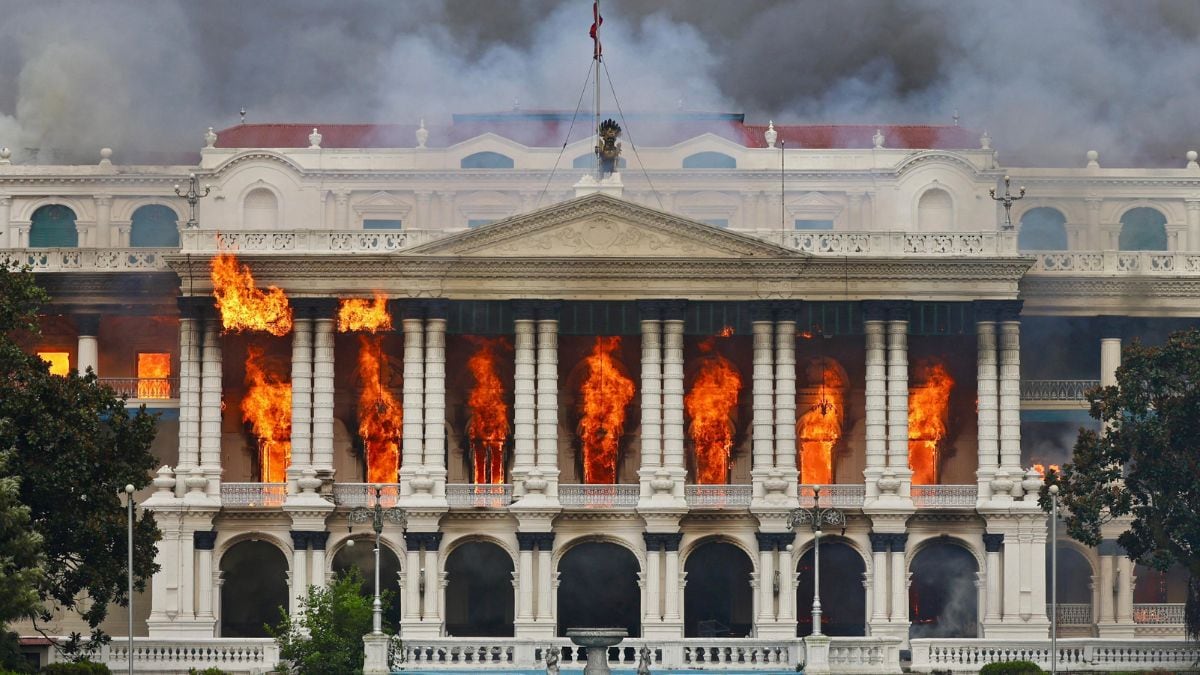In a day that saw Europe join the march against greed, the Occupy Wall Street protest truly became of the West with supporters flooding symbolic centres in Frankfurt, Rome, Madrid and Lisbon. The movement’s central focus, has been those left behind in the last decade of economic growth in the United States – the 99%. The target is a corrupt Wall Street that has gradually come to typify the central malaise of an unravelling democracy. And the goal is this as stated in the OccupyWallStreet site: We demand that Barack Obama ordain a Presidential Commission tasked with ending the influence money has over our representatives in Washington. [caption id=“attachment_108845” align=“alignleft” width=“380” caption=“Will India relate to Occupy Wall Street? B Mathur/Reuters”]  [/caption]
But who are the one percent? Mother Jones has an interesting chart of this break up. While the bankers come as no surprise, the proportion of lawyers and doctors is hard to miss. The majority of this one percent however do hold most of their assets on Wall Street.
No inequality discussion is complete without Africa and South Asia, where the bottom quarter is woefully left behind. Which then begs the question: Will India join this movement? Unlikely. While the representatives of the 99% in the west identify with each other through common losses of homes, jobs and security, India presents a typical developing country where the aspiring middle class seldom relates to the urban working class, and the urban working class to rural India. And these groups are simply not digitally organized or connected to create the momentum that one sees in the west. The one symbol of greed or the common economic enemy exists less in India, even if there is one common enemy of corruption: the central government. Here are some of the agency reports from across the world: Tens of thousands of people marched through the streets of Madrid today against government cutbacks to health and education spending, unemployment and corporate greed as part of a global day of protest. The demonstration came exactly five months after Spain’s so-called “indignant” protest movement was born with a rally on May 15 that turned into a sprawling protest camp that occupied Madrid’s central Puerta del Sol for weeks. The “indignant” movement then spread to Europe, finding strong backing in crisis-hit countries like Greece, and then worldwide – last month reaching the centre of global capitalism in Wall Street. Five columns of marchers converged on Madrid’s central Cibeles Square after walking for hours from different points across the city before proceeding to Puerta del Sol for assemblies scheduled to last throughout the night. Many of the protesters wore matching green T-shirts with slogans against government spending cuts in education which have been a common sight at demonstrations by teachers against the government austerity measure. Inspired by Spain’s “indignant” movement and the “Occupy Wall Street” movement in the United States, people took to the streets today in a rolling action targeting 951 cities in 82 countries around the world. The protest in Madrid was one of 60 rallies held across Spain. With a general election on November 20, there is speculation that the rally could turn into another protest camp in an attempt to influence the political agenda. Rome joined in too An historic Rome square today turned into a battle field as hundreds of protesters pelted police vans with rocks and bottles and police fired tear gas and water cannon jets into the crowd. Groups of peaceful protesters could be seen huddling on the steps of St John Lateran basilica for shelter as the battle raged in front of them. Adding to the chaos, the flow of traffic through the busy hub was not blocked off and cars could be seen driving chaotically through the square. Stones were thrown at a Ferrari and a Mercedes that found themselves in the midst of the violence. Earlier, hooded protesters set several cars alight and smashed the windows of banks and shops. “Shame! Shame!” some shouted at police, as others tried to make their way out of police lines around the square with their hands in the air. “This is disgusting! It’s the government’s fault for forcing young people to act like this. They’ve left us without a choice,” said Laura, 23. Nearby another protester, Roberto, said: “It’s unbelievable. The police have turned this into a riot. If they just held back we would protest peacefully.” As the man in his 50s spoke to AFP, a group of protesters set light to a police van shortly after its two occupants ran from the vehicle. Between 200 and 300 riot police officers were then seen running from the square. A female protester was seen staggering from one clash with her face covered in blood. A police spokeswoman said at least four people were injured in the violence, while Italian news agency ANSA reported 20 wounded. In one part of the square, protesters ripped up paving blocks and threw them at police. Others shouted “No to violence!” and tried to calm the situation. And finally, Frankfurt in Genrmany, where thousands of people demonstrated outside the European Central Bank’s Frankfurt headquarters on the first day of a worldwide protest against income disparity and corporate greed


)

)
)
)
)
)
)
)
)



